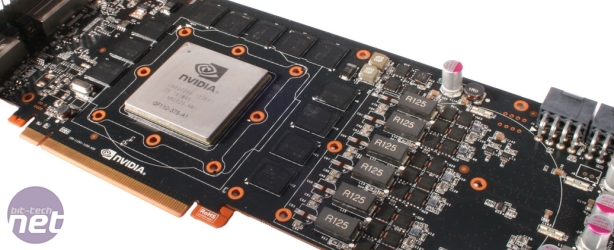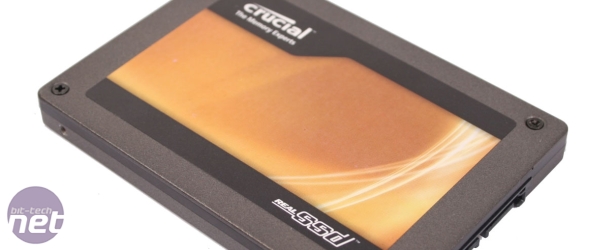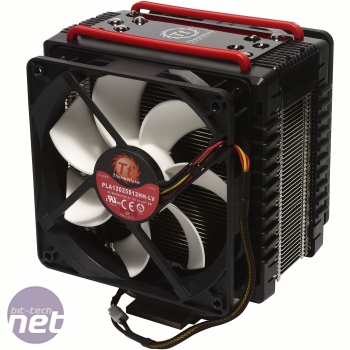PC Hardware Buyer's Guide February 2011
February 10, 2011 | 08:11

Premium Player February 2011
When only the best will do, there’s a great choice of hardware out there to cater for your needs, providing premium performance for a premium price tag. However, even with a high budget, we’re not out to waste money - building a top-end system isn’t as simple as just buying the most expensive components out there and slinging them all together. If you’ve just bought that 24in or 30in monitor, surround sound speaker kit and comfy leather chair with footrest (or sub as it's also known) and you're looking for some kick-ass performance that won't wait for anyone, then this is what we consider the very best hardware at the moment.| Premium Player | |||
| Product | UK Price (inc VAT) | US Price (ex tax) | |
| CPU | 3.06GHz Intel Core i7-950 | £230 | $295 |
| Motherboard | Asus Sabertooth X58 | £155 | $200 |
| Memory | 6GB 1,600MHz DDR3 | £65 | $70 |
| Graphics Card | Nvidia GeForce GTX 580 | £390 | $500 |
| PSU | XFX Black Edition P1-750B-NLG9 | £90 | $130 |
| CPU Cooler | Thermaltake Frio | £40 | $60 |
| Case (UK) | SilverStone FT02B | £200 | $250 |
| Optical drive | SATA DVD-RW | £15 | $20 |
| Storage (HDD) | 1TB Samsung SpinPoint F3 | £45 | $70 |
| Storage (SSD) | Crucial RealSSD C300 128GB | £175 | $240 |
| Misc | HighPoint Rocket 620 | £30 | $25 |
| Sound Card | Asus Xonar DX | £55 | $90 |
| Overall Price: | £1,490 | $1,950 | |
New This Month
Our recommendations for our premium player list inspired a fair amount of debate in the office this month, as Intel’s new LGA1155 CPUs make a solid case for their inclusion, even though they're mid range parts. What’s tipped our recommendation in favor of an LGA1366 build, though, is the well publicised problems Intel is having with its P67 and H67 chipsets. As a result, you’re better off opting for an X58-based board right now.Let’s not get down about it, though. The X58 based system recommended above will still be blazingly fast and has a number of advantages over a Sandy Bridge based system too, such as its triple-channel memory and dual 16x PCI-E slots. It will also have plenty of overclocking headroom, meaning serial tinkerers won’t be disappointed.

With that explanation out of the way, it’s time to introduce the two new components in our premium player build. First up is the Asus Sabertooth X58, which proved to be hugely overclockable during our testing. It’s muscled out the Asus P6X58D-E and the Gigabyte X58A-UD3R that used to occupy this spot, as it's priced very closely to the two other boards but offers extra features such as an extended warranty, heavy duty components and an interesting colour scheme.
The second addition to the team is the Nvidia GeForce GTX 580 1.5GB, which is the fastest graphics card we’ve ever tested. It offers incredible levels of performance and comes with a quiet and efficient cooler to boot - what’s not to like?
And The Rest
The CPU that we’ve strapped into the Sabertooth is the trusty Intel Core i7-950. This CPU used to retail for a whopping £400, but its price has now plummeted to make it more competitive with Intel’s LGA1155 based chips. This is good news, though, as you’re still getting the same great performance, just for nearly half the price. The i7-950 is quick at its stock speed of 3.06GHz, but if you’re looking for a little more oomph then you should be able to comfortably ramp up the CPU to just north of 4GHz. We got our test sample up to 4.3GHz, but remember that your mileage may vary when overclocking.Our premium player PC is housed in the arrestingly beautiful SilverStone FT02B which, as a bonus, is also ace at cooling even a monster PC. This is due to a combination of the excellent Air Penetrator fans the case uses, as well as its quirky rotated motherboard tray; a feature which is sure to make your killer PC a talking point. You should note that we’ve recommended the black version of the case, as this is available worldwide. If you’d like to get a hold of the limited edition version of the case with the red interior that we reviewed then look out for the R-W suffix in the listing.

When it comes to LGA1366, we’d always prefer 6GB of memory over 3GB if possible, so we’ve gone for 6GB of 1,600MHz DDR3 RAM. The relatively high frequency will give us a bit more headroom when it comes to overclocking. For example, if we wanted to aim for a 4GHz overclock, we’d use a QPI of 191MHz (191 x 21 = 4,011). If we’d opted for 1,333MHz memory, we’d have to use the 6x memory strap with this QPI, which would give us a slower memory frequency of 1,146MHz. With the 1,600MHz memory, we can safely use the 8x memory strap and have our memory run at a healthier 1,528MHz. We wouldn’t recommend overclocking 1,333MHz memory to 1,528MHz for everyday use unless you really know your DRAM.
For storage, we’ve gone for a single 1TB Samsung SpinPoint F3 hard disk and a 128GB Crucial C300 SSD. We’ve hooked both of these up to a HighPoint Rocket 620 controller, which enables blistering SATA 6Gbps speeds. You can then install Windows, games and slow-loading applications to the SSD, and everything else to the Samsung hard disk.
We’ve also added an Asus Xonar DX sound card to avoid conflicts with the Realtek audio codec of the motherboard and enhance the sound generally. If you're really into your audio, you might want to consider replacing the Asus Xonar DX with the Asus Xonar Xense Audio Bundle. It's finally on sale for under £200, making it well worth considering.
When it comes to PSUs, our sister mag Custom PC recommends the 750W XFX Black Edition P1-750B-NLG9, which won its Premium Grade award for its price and performance, rather than its name. To quote the review: 'at just over £100, the 750W XFX Black Edition...is great value for money. If you're in the market for a 700-799W PSU then it should be at the top of your shopping list.'.
The CPU cooler we’ve chosen is the Thermaltake Frio, which blasted through our thermal benchmarks. With both its fans installed its one of the best coolers we’ve ever seen.
To round off the build, there’s a cheap SATA DVD drive. Plus, if you haven't got a copy already, you should factor in a copy of Windows 7 - if you're confident that you won't be upgrading much, then an OEM copy should be fine, but serial upgraders need the pricier retail version.

MSI MPG Velox 100R Chassis Review
October 14 2021 | 15:04









Want to comment? Please log in.